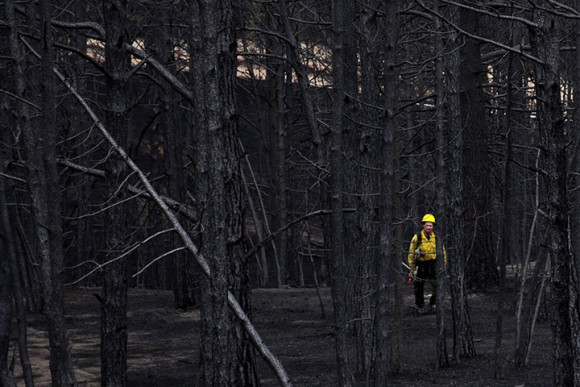DROUGHTS, WILDFIRES, AND FLOODS, OH MY!
Whether you believe in global warming or not, chances are good you or someone you know will have their lives turned upside down by a natural disaster. From super tornadoes in the Great Plains and Midwest, to the lingering impacts of hurricanes in the Gulf and East Coasts, to droughts, wildfires and flash floods from the Redwoods to the Rocky Mountains, millions of Americans have had their lives, livelihoods, and futures turned upside down.
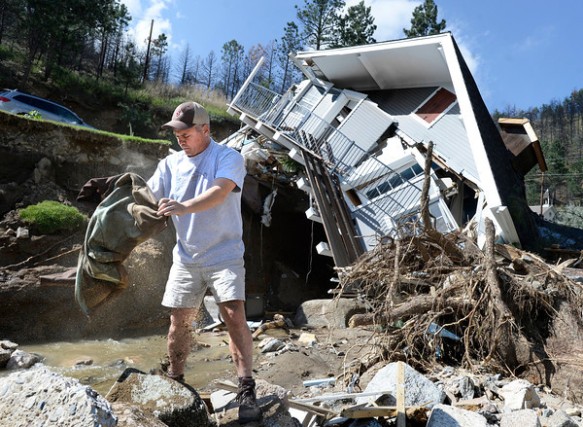
Amplifying the effect of these natural disasters is the fact that many American cities and rural towns have grotesquely under-invested in infrastructure and have a backlog of overdue maintenance orders to repair and replace structurally deficient roads, bridges, dams and levees, as well as transmission lines, transportation hubs, rail roads, drinking water systems, along with solid and hazardous waste management facilities. According to a recent American Society of Civil Engineers (ASCE) report, the U.S. received a near failing grade of a D+ on its 2013 annual infrastructure report card.
2013 REPORT CARD FOR AMERICA’S INFRASTRUCTURE
These infrastructure vulnerabilities, combined with major weather-related natural disasters are a malignancy metastasizing into cataclysmic disruptions in communication, transportation, human welfare, and the tragic loss of housing, food, water and energy supplies, and, to a greater extent, cause lasting damage to our national economy.
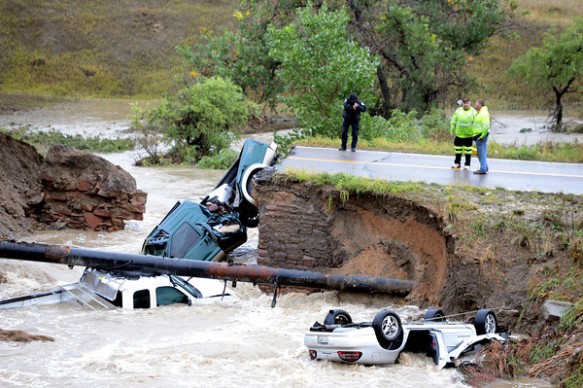
What were once considered issues for a distant future, climate change, urban sprawl, and a deteriorating national infrastructure have moved swiftly, front and center into the present, and Americans are finally beginning to wake up to the changes all around them.
A TRIFECTA OF WEATHER-RELATED TRAGEDIES
In June, President Obama told an audience at Georgetown University, “Droughts and fires and floods, they go back to ancient times. But we also know that in a world that’s warmer than it used to be, all weather events are affected by a warming planet.”
Between the wildfires last year and this year, the unprecedented and continuing drought, and the recent rain storms that dumped a year’s worth of rainfall in less than 24-hours, the state of Colorado now sits at the epicenter of a perfect storm of tragic climate events.
But considering the 1,000-year rain and 100-year flood event occurred in the backyard of some of the world’s top weather and climate research institutions, we can be confident the event will be thoroughly researched, as both the National Center for Atmospheric Research and the Earth System Research Laboratory are headquartered in Boulder. Ironically, each office was forced to close during to flooding.
FLOOD IMPACTS
According the the Colorado Office of Emergency Management, at least eight deaths have been confirmed, with two more missing and presumed dead while dozens remain unaccounted for. Over 11,000 people had be evacuated from their homes, with 700 being rescued by Black Hawk helicopters in what Lt. Col. Mitch Utterback of the Colorado National Guard described as the largest aerial rescue campaign since Hurricane Katrina in 2005.
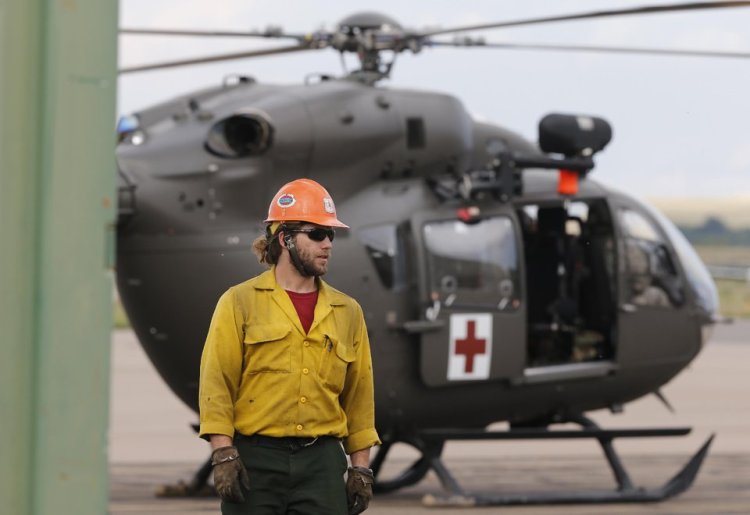
Nearly 19,000 homes have been damaged, and over 1,500 have been destroyed. The Colorado Department of Transportation estimates that at least 30 state highway bridges have been destroyed and an additional 20 are seriously damaged, with repairs for damaged bridges and roads expected to cost many millions of dollars. Miles of freight and passenger rail lines were washed out or submerged, including a section servicing Amtrak‘s iconic California Zephyr.
DROUGHT IMPACTS
According to the National Climactic Data Center, the globally-averaged temperature for August 2013 tied with 2005 as the fourth warmest August since record keeping began in 1880. August 2013 also marked the 35th consecutive August and 342nd consecutive month with a global temperature above the 20th century average.

Until the biblical floods barreled through Colorado, 90-percent of the state was in various states of drought; in some instances dating back to a decade or more. National Geographic’s Sandra Postel, believes “the long-term drought that has parched the area and gripped much of the Colorado River Basin over the past 14 years may be partly to blame for the severity of the floods. Drought tends to harden the soil. When rains do come, less of the water can absorb into the ground, so it quickly runs off the land.”
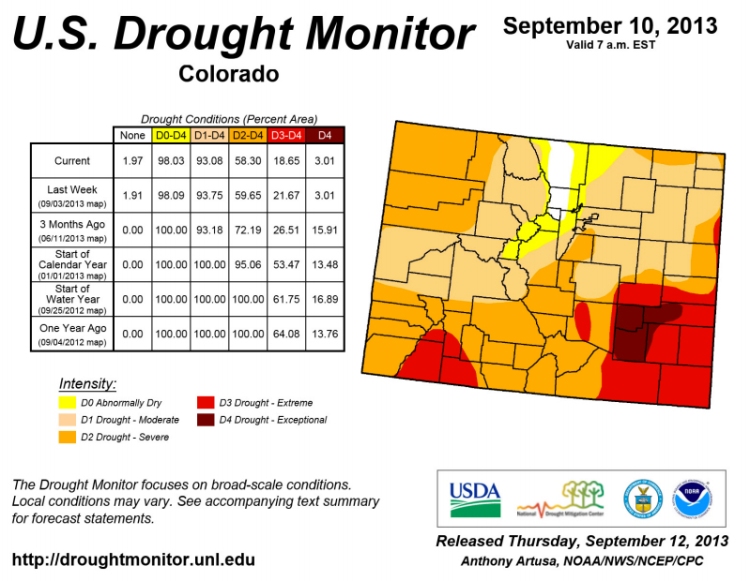
WILDFIRE IMPACTS
And if the floods and drought weren’t enough, the 2013 wildfire season was the most destructive in Colorado’s history. Over a dozen fires charred more than 150,000 acres, or approximately 234 square miles. “Fires can lead to worse flooding, because they remove vegetation that can slow down and trap rainfall,” said Postel. (See “Fire and Rain: The One-Two Punch of Flooding After Blazes.”)
Kevin Hyde, a post-doc studying post-fire erosion at the University of Wyoming, says “the compounded damages from the cycle of wildfire and flooding could very well be amplified on the Front Range in coming years. Climate models foretell larger regional storms, and scientists have also predicted bigger, more intense wildfires in Colorado’s future.” What is that going to mean for the people living in the mouth of these areas?” wonders Hyde.
If the historic droughts, record-breaking wildfires, and the 100-year flood that besieged Colorado this summer, along with the personal tragedies of lives lost and dislocated, hundreds of millions of dollars in infrastructure repair costs, crops lost, communities isolated, water quality problems, and lost revenues to businesses, are any indication of the future living in the Rocky Mountain State — with all its majesty and splendor — people better get ready for the new normal.
To support the ongoing Colorado relief and recovery efforts, donations can be made to:
- Boulder Community Foundation – select Lyons Community Foundation Flood Relief as the designation
- Foothills United Way Flood Relief Fund
- The Longmont Community Foundation – St. Vrain Valley Flooding Relief Fund
- Help Colorado Now also has a helpful list of agencies that are responding
